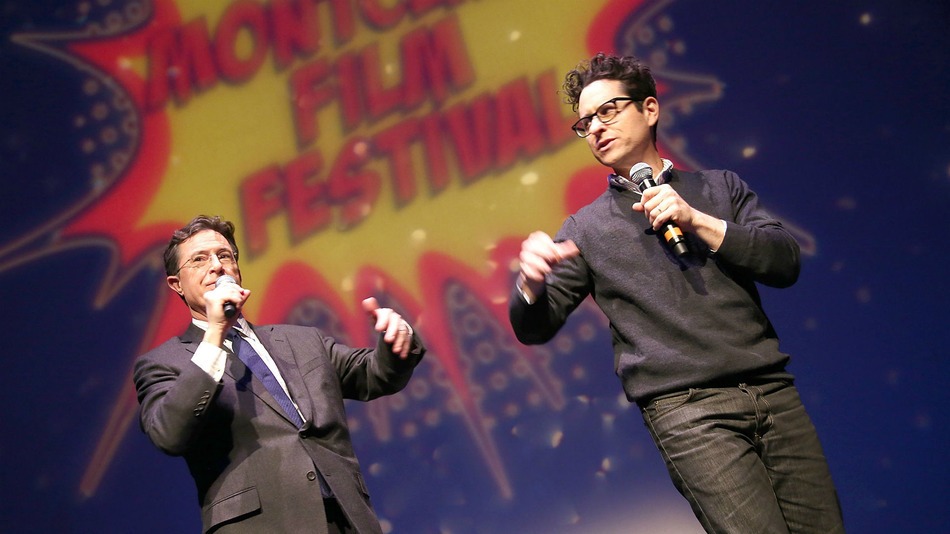Don’t worry, ‘Star Wars’ fans: J.J. Abrams promises minimal lens flare

That's how many lens flares appear in Star Trek, as Stephen Colbert told J.J. Abrams during a spirited Saturday evening fundraiser for New Jersey's Montclair Film Festival. It's something Abrams has been dinged about in a number of his more recent films, including Super 8 and both Treks, so Colbert called him on it during their two-hour chat.
If that term is unfamiliar to you, here's what it looks like in Trek:

Notice the way the light kind of washes over the frame? That's the visual after effect of light scatter in a lens, and it's called lens flare.
"I'm gonna explain this whole thing but then when you say there are 825 in Super 8 I have no explanation," Abrams gamely replied. "In Star Trek, the reason I wanted to do it was that the future they were in was so bright it couldn't be contained."
His fascination with lens flare comes from Hollywood classics like Close Encounters of the Third Kind and Die Hard. Those films use anamorphic lenses in creative ways to produce lens flare.
"[Anamorphic lenses] expand the picture so that on a 35mm camera it gets, basically, crushed," Abrams explained. "Then when you project it, you actually use a lens that un-crushes it. But what happens when you do that is you get these really cool background oval lights.
"There are so many movies from my childhood that had those."
Abrams felt that visual tic would be a great creative fit for Star Trek, so he worked with director of photography Daniel Mindel to create large, halogen spotlights, referred to on set as "best in show." Mindel would then wield these lights off-camera to create the effect.
It became this weird kind of art form of how to make the perfect lens flares with different kinds of lenses," Abrams said. "It's just this thing that felt like it was a visual system for the movie. I just fell in love with how it looked."
The lens flare returned in force for Super 8, Abrams' Trekfollow-up, and it was omnipresent yet again in Star Trek Into Darkness. Over the course of those three movies, he developed a reputation for overusing the effect. Abrams finally got the hint when that reputation followed him home.
"There was literally one scene in [Star Trek Into Darkness] where Alice Eve was so obliterated by a lens flare," he said. "I was showing the scene to my wife, Katie, who just said, 'Okay, you know what? Enough. I can't see what the scene is about. Who is standing there?"
Lesson learned.
Abrams admitted that the memory of that encounter followed him into his recent efforts on Star Wars: The Force Awakens. The result? Minimal lens flare.
"I kind of pulled back," he said. "As you'll see in the Star Wars movie, I've allowed lens flare to take a backseat."
It's been a conscious effort, too, as Abrams reputation precedes him. In working with Force Awakens visual effects supervisor Roger Guyett, Abrams has had to actively keep the lens flare at bay.
"We're making sure it looks photorealistic and photoreal," he explained. "But every time there could be a flare — because [Guyett] knows I like to do that — I say 'this is not the movie.'
"These are not the flares you're looking for."
Политика конфиденциальности | Правила пользования сайтом







